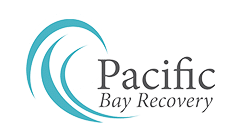Recovery from addiction is a courageous journey, one that calls for resilience, patience, and a whole lot of self-love. Along the way, building a solid self-care toolbox is one of the smartest moves you can make. Think of it as your personal arsenal of go-to strategies, activities, and treats that help you stay balanced, grounded, and joyful every single day.
But what exactly goes into a self-care toolbox? It’s different for everyone, but the common thread is intentionality. Choosing things that nourish your mind, body, and soul, especially when life throws curveballs or old cravings pop up.
In this article, we’re going to explore how to build a self-care toolbox that’s not just effective but also fun and tailored to your unique recovery journey. Ready? Let’s dive in!
Why Self-Care Matters in Recovery
First, a little reminder: self-care is not selfish. In fact, it’s essential. When you’re healing from addiction, your body and brain are literally rewiring, and that takes energy. Stress, triggers, and emotional upheaval can make the road tough, but a strong self-care routine can soften the bumps.
Self-care helps you manage stress, boost your mood, and build emotional resilience. It also creates space for joy and peace, things that might have felt out of reach for a while.
Step 1: Tune into Your Body
Your body holds so much wisdom. Learning to listen and respond to its needs is key in recovery. Start by identifying what your body loves and what helps it relax.
Maybe it’s a morning stretch that wakes you up gently or a walk outside to soak in some fresh air. Or perhaps a warm bath after a long day is your go-to reset button.
Pay attention to how these simple acts affect your mood and energy. The more you honor your body’s needs, the stronger your foundation becomes.
Step 2: Find Your Mindful Moments
Mindfulness might sound like a buzzword, but it’s actually one of the best self-care practices out there. It’s about being present and fully experiencing the moment without judgment.
Try to carve out a few minutes each day for mindfulness. It could be meditation, deep breathing, or simply savoring a cup of tea with all your senses. These little pauses help calm the mind and reduce anxiety.
One fun way to add mindfulness to your day is by exploring scents. Signing up for a perfume subscription can be a delightful way to discover fragrances that uplift or calm your spirit, turning scent into a mindful moment.
Step 3: Create a Joy List
Recovery isn’t just about avoiding triggers or hard work. It’s also about rediscovering what lights you up.
Make a “joy list,” a collection of activities, people, or things that make you smile or feel good. It might include listening to your favorite music, dancing around your room, painting, journaling, or cooking a new recipe.
Having this list handy means you can pull out a quick happiness boost whenever you need it. It’s your personalized happiness toolkit.
Step 4: Build Your Support Network
No self-care toolbox is complete without connection. Building and maintaining healthy relationships is crucial for long-term recovery.
This doesn’t mean you have to be surrounded by a crowd. Even a few trusted friends, a support group, or a therapist can make a big difference.
Make time for these connections. Schedule regular check-ins, join group activities, or simply send a text to someone who lifts your spirits. Remember, reaching out is a strength, not a weakness.
Step 5: Nourish Your Body with Intent
Food is fuel, but it’s also comfort and culture. During recovery, focusing on nourishing your body with wholesome, balanced meals can improve mood, energy, and overall health.
Try to incorporate fresh fruits, veggies, and plenty of water into your routine. Cooking at home can be a creative outlet and a way to practice mindfulness.
Don’t stress about perfection. Even small improvements add up and make a difference in how you feel.
Step 6: Move in Ways You Love
Exercise is often prescribed as a key to recovery, but it shouldn’t feel like a chore. Find a movement you enjoy, something that feels good rather than forced.
This could be yoga, swimming, walking your dog, or even dancing to your favorite playlist.
Movement releases endorphins, reduces stress, and strengthens your body. Plus, it’s a fantastic way to connect with yourself in a positive way.
Step 7: Embrace Creative Outlets
Creativity is a powerful form of self-expression and healing. You don’t have to be an artist or musician to benefit.
Try doodling, coloring, writing poetry, or cooking a new dish. These activities engage your brain differently and offer a healthy escape from stress.
Creative projects can also become meaningful rituals that support your recovery mindset.
Step 8: Prioritize Rest and Relaxation
Recovery can be exhausting, both physically and emotionally. Never underestimate the power of rest.
Develop a bedtime routine that helps you wind down. Turn off screens, dim the lights, and do something relaxing like reading or gentle stretching.
Good sleep strengthens your mind and body, making it easier to cope with challenges.
Bonus: Personalize with Small Luxuries
Self-care is about treating yourself kindly, and small luxuries can go a long way. It might be your favorite scented candle, a cozy blanket, or that special snack you savor.
One surprisingly fun luxury is trying a perfume subscription. It’s an enjoyable way to introduce new scents that boost your mood and make everyday moments feel special. Plus, it adds a splash of excitement as you unwrap a new fragrance each month.
Putting It All Together
Building a self-care toolbox is a dynamic, ongoing process. Your needs and preferences will evolve, and that’s okay. The goal is to collect practices and habits that support your physical, emotional, and mental health in recovery.
Start small, experiment with what feels good, and celebrate the wins, no matter how tiny.
Remember, self-care isn’t a luxury. It’s a lifeline. It’s what helps you show up for yourself fully and build the vibrant, sober life you deserve.


